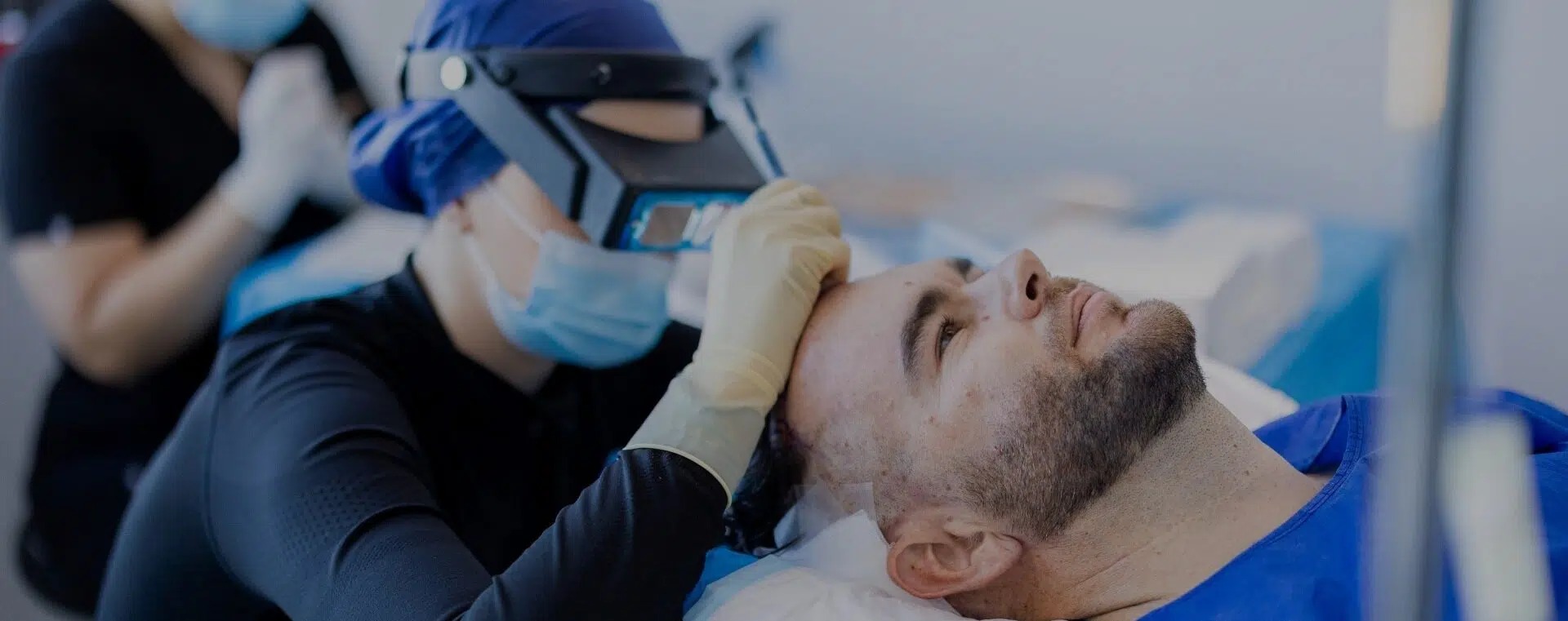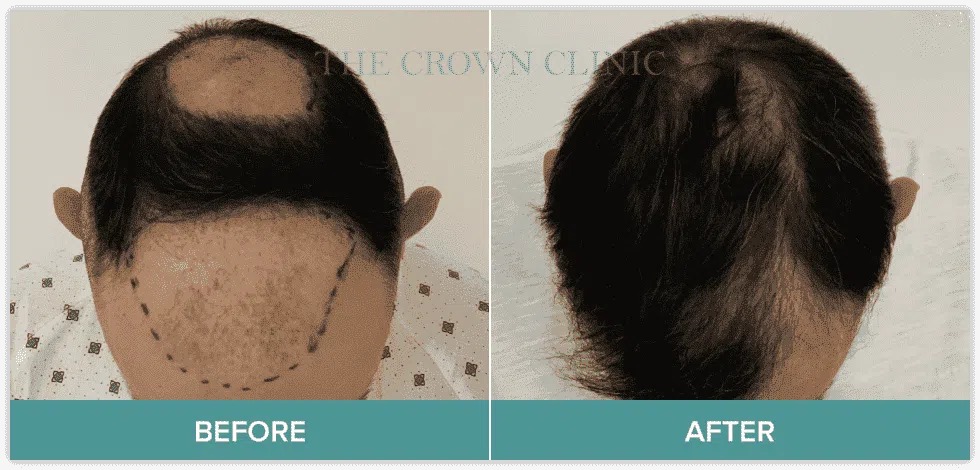Last updated on August 6, 2025
Yes, you can get a hair transplant on a scar—and thanks to modern techniques, it can look completely natural. At Crown Clinic, we regularly help clients restore hair growth in areas they thought were permanently lost due to injury, surgery, or previous transplants.
Hair loss is tough enough without the added challenge of scarring. But if you’re thinking your scar rules out a successful hair transplant, we’re here to clear that up. In this article we’ll walk you through how hair grows on scar tissue, the methods we use, and what you can expect along the way.
Can Hair Grow on Scars?
It’s possible, but more complex than transplanting into a healthy scalp. Scar tissue is different from regular skin—it often has less blood flow, altered collagen structure, and reduced elasticity. These differences can make hair graft survival more difficult, but not impossible.
The good news is that with today’s FUE technology our team at Crown Clinic can try to achieve results by adapting the approach to suit the scar’s location, size, and depth.

You can get a hair transplant on a range of scars such as surgical scars, burn scars and accident or injury scars.
What Types of Scars Can You Get a Hair Transplant On?
You can get a hair transplant on a wide variety of scars, including:
- Surgical scars (e.g. from mole or cyst removal, facelift, or craniotomy)
- Accident or injury scars
- Burn scars
- Scars from scalp infections or skin conditions like folliculitis
- Congenital scalp scars or birthmarks
Each case is unique, which is why a consultation is essential to determine whether the scar is suitable for transplantation.
How Does Hair Transplant on a Scar Work?
Hair is transplanted into scar tissue using the same techniques used in standard hair transplants, but with more precision and planning. Because scar tissue is less vascularised (lower blood supply), it’s important to handle the grafts carefully and place them at just the right depth and angle.
At Crown Clinic, we use the following methods:
FUE (Follicular Unit Extraction)
This minimally invasive method involves harvesting individual hair follicles—typically from the back or sides of the scalp—and implanting them directly into the scar tissue.
Because there’s no need for a linear incision, FUE is ideal for patients looking to avoid additional scarring. It also enables precise graft placement around uneven or irregular scar borders, helping to create a more natural-looking result.

Healing from a scar hair transplant is generally similar to standard FUE recovery.
What to Expect During Recovery
Healing from a scar hair transplant is generally similar to standard FUE recovery, although it may take slightly longer for the scarred area to fully integrate the new follicles.
First 7–10 days: Mild redness, swelling, and scabbing. Follow all post-op instructions carefully.
1 month: Visible signs of surgery are mostly gone. Some patients may notice temporary shedding (“shock loss”).
3–6 months: New hair begins to emerge in the scar area.
12–18 months: Full results, with improved density and coverage.
At Crown Clinic, we monitor your healing and provide aftercare advice tailored to your skin type and graft response.
Who’s a Good Candidate for Scar Hair Transplant?
You’re likely suitable if:
- Your scar is at least 6–12 months old
- You have a healthy donor area
- Your scar is not inflamed or raised
- You’re in overall good health
- You have realistic expectations about results
We’ll assess your donor availability, scalp condition, and goals in your free consultation.
Book a Free Hair Consultation
Worried about hair loss or noticing changes in your hair that concern you?
At Crown Clinic, we bring over 50 years of experience in hair restoration and offer a truly personalised approach to treatment. Whether you’re exploring FUE hair transplantation or non-surgical options, our expert team will take the time to understand your medical history, hair loss concerns, and goals—so we can recommend a solution that works for you.
Call us on +61 2 9134 4788 or book a free consultation here.
FAQs
Can I get a hair transplant on a scar?
Yes, you can. Hair transplants can be successfully performed on scar tissue resulting from surgery, injury, burns, or skin conditions. However, the outcome depends on the scar’s thickness, flexibility, blood supply, and overall health, as well as the availability of healthy donor hair. A consultation helps us determine whether you’re a suitable candidate and which technique will deliver the most natural result.
How much is a hair transplant on a scar?
The cost varies depending on the size and location of the scar, the number of grafts required, and the technique used. At Crown Clinic, we offer a free, no-obligation consultation to assess your situation and provide a tailored quote that reflects your needs and goals.
Does hair grow naturally in a scar area after the transplant?
It can, although the growth may be slightly slower or less dense due to reduced blood flow in scarred tissue. That said, at Crown Clinic we do our best to enhance graft survival and ensure optimal placement, helping you achieve realistic, natural-looking coverage even in more challenging scar areas.
Can burn scars be treated with a hair transplant?
Yes, burn scars can often be treated with great success, provided the scar is fully healed and the surrounding skin is in good condition. Our minimally invasive FUE-based methods are particularly effective in these cases, allowing us to restore hair in a way that respects the sensitivity and structure of the scarred area.
Is the donor area affected when repairing scars?
Only if too many grafts are taken or the area is not properly managed. At Crown Clinic, we use precision extraction tools and techniques to protect the integrity of your donor site. We also calculate your long-term donor capacity carefully to ensure your scalp maintains a full and natural appearance—even after multiple treatments, if needed.